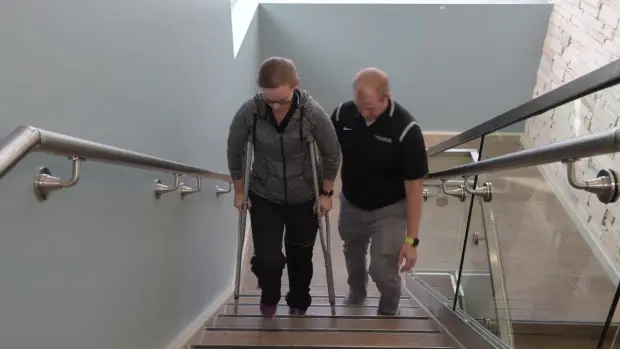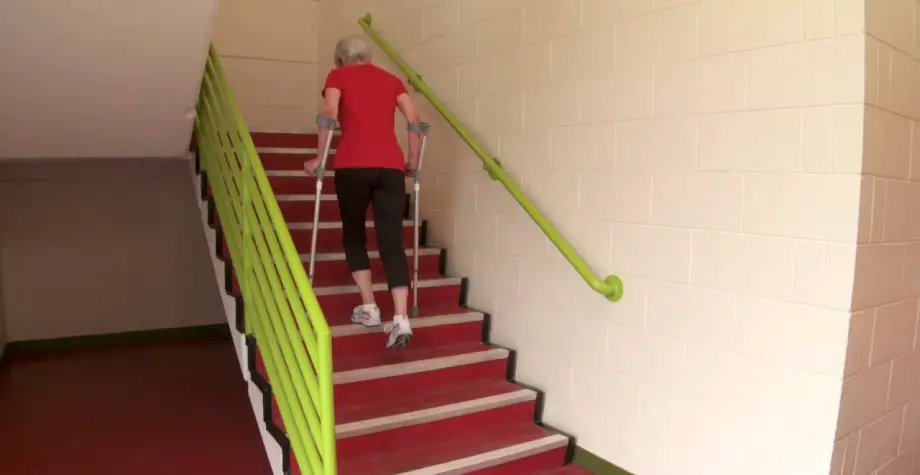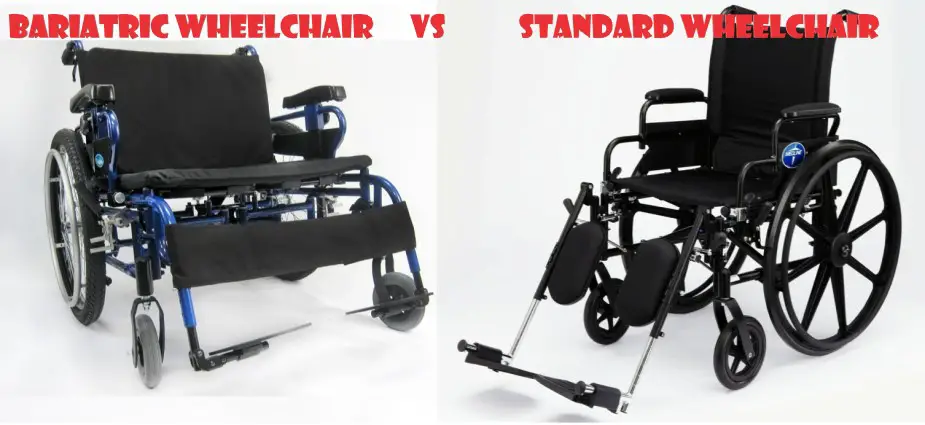If you’re using crutches, then you probably have a nasty leg injury, or you’re healing after leg surgery.
Crutches might be uncomfortable and limit your range of activities, but they are remarkable for preventing or reducing pain while the leg heals.
Whether it is in your home, apartment building, or outside, there are bound to be stairs without railing. Stairs like that are majorly built for aesthetic purposes, and since nobody foresees accidents, the only allowance given for extra safety is the width of the stairs.
Therefore, this article has been specifically written for you to enable you to know how to properly use crutches on stairs without railings.
As your crutches will stay in for a couple of weeks to allow your legs to heal, you will most likely get used to using your crutches on these stairs without railing.
But till you become an expert at it, allow this article to be the guide you need!
Table of Contents
- Things to Note When Using Crutches on Stairs without Railing
- Step-by-Step process: How to Use Crutches on Stairs without Railing
Things to Note When Using Crutches on Stairs without Railing

Before describing the step-by-step process, there are some highly important things to note when using crutches on non-railing stairs. They include the following.
- Do not attempt to carry additional items in your hands. If you must carry things, place them in a backpack or knapsack and carry them on your back. Your hands must be free to properly navigate steps without railings while using your crutches.
- Never support your weight with your armpits. Your armpits are home to the brachial plexus, a network of nerves that supply your upper limbs. Applying that kind of pressure can damage the nerves, rendering your upper body incapacitated.
- Ensure that your crutches are your actual size. It is easier to have accidents when your crutches are not properly fitted to accommodate your frame. It affects your stability as well, and this can be dangerous, especially when trying to walk on stairs without railings.
- Ensure that the stairs are well lit or have good access to sunlight at the time you want to walk on them. This way, you avoid slipping and falling.
- Check that there is no water or liquid on the stairs. You don’t want to fall on the stairs. Liquids can make you slip, worsening your injury or even causing another one. So, try to look or ask someone to confirm for you. Just ensure that you are certain that there is no fluid on the floor.
- Take baby steps. Don’t try to rush when moving up or downstairs. As you get the proper hang of it, your body automatically adjusts, increasing the pace at which it moves. Allow yourself to get used to moving on those stairs with your crutches before you start trying to run or take multiple steps with them on.
- Wear practical footwear, especially when trying to use your crutches on stairs with no railing. Shoes like high heels make you prone to falls, even without the crutches. The most important determining factor for your footwear at this time is how comfortable it is, and how stable it is.
- Ask for help when you need it. You can practice with someone until you can move by yourself. They can also help you with carrying your other things until you learn to do it all by yourself.
Related: How to Carry Things with Crutches Seamlessly
Stairs without railings can be quite scary, especially with crutches on. So, if you feel unsure about doing it on your own even after reading this, please get someone to help you move up and down till you are confident that you can.
Step-by-Step process: How to Use Crutches on Stairs without Railing

Climbing the stairs
- Move away from the edge to the middle of the staircase.
- Place each crutch under your arm.
- Starting at the bottom step, lift the strongest of your legs onto the bottom step while keeping your crutches in place.
- Pressing down into the crutches for support using your hands – not arms, lift the weaker leg onto the step, joining the first.
Note: If your injury is non-bearing and you’re not allowed to place your foot on the ground, bend your knee as you lift the leg onto the step, keeping it slightly raised and bent at the knee till you safely get up.
- Place the crutches on the step now, alongside your legs.
- Confirm that you have a good balance and proceed to the next step in the same fashion.
- Repeat these motions until you arrive at the landing.
- A mantra to keep in mind is, “up with the good, down with the bad.” So, don’t forget to always start climbing up with your stronger leg first.
Related: How to Easily Make Your Crutches More Comfortable (DIY Guide)
Going down the stairs
- Move away from the edge of the staircase to the middle.
- Remove each crutch under your arm and extend them to the front.
- Starting where you are, put down the weakest of your legs on the immediate step, keeping your crutches in place.
Note: If your injury is non-bearing and you’re not allowed to stand on the ailing foot, then lift it to the immediate step but keep it extended.
- Put down the stronger one.
- Confirm that you’re well-balanced.
- Repeat the steps for the remainder of the steps till you reach the base of the stairs.
- Keep the mantra in mind as you gently come down the stairs. Don’t forget, up with the good, down with the bad. So, get your weak leg down before your strong one when descending.
Related: Steps and Techniques of Properly Securing a Mobility Device
If for any reason you are not able to pull this off either because the stairs are too narrow and there is no one to help or because you accidentally lose your footing halfway down the stairs, sit and use your hips and buttocks to propel yourself to the next steps until you reach up or down.
However, you will have to wait until someone comes along and helps you with your crutches.




